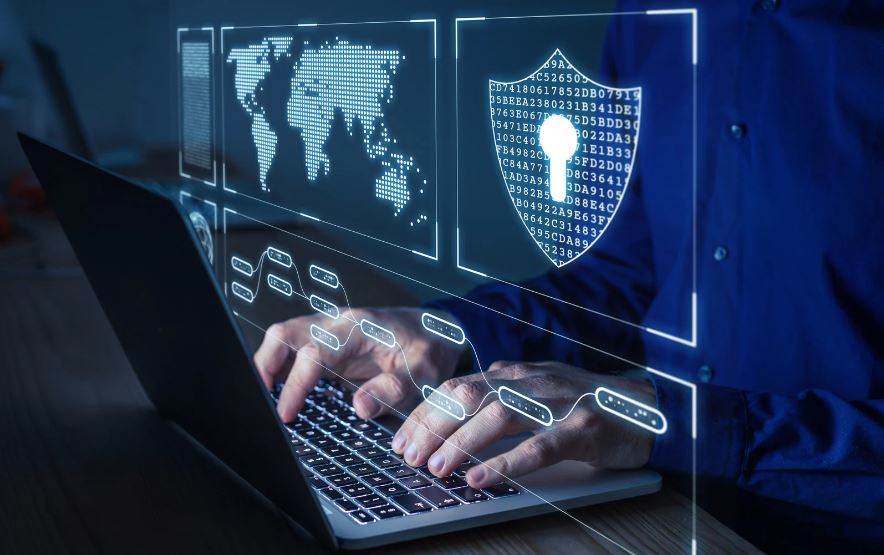To effectively combat ransomware attacks, it is crucial to have a clear understanding of what ransomware is and how these attacks occur. This article will provide an overview of ransomware and the methods employed by attackers.

What is Ransomware?
Ransomware is a type of malicious software that encrypts files or locks users out of their systems until a ransom is paid. It is typically delivered through email attachments, malicious links, or exploit kits. Once the ransomware infects a system, it encrypts valuable files, rendering them inaccessible to the victim.
Attackers demand a ransom payment, often in cryptocurrency, in exchange for providing the decryption key or restoring access to the compromised system. However, there is no guarantee that paying the ransom will result in the recovery of files or the restoration of system access.
How Ransomware Attacks Occur
Ransomware attacks can occur through various techniques, each with the goal of infiltrating vulnerable systems. Here are some common methods used by attackers:
- Phishing Emails: Attackers send emails with malicious attachments or links, posing as legitimate entities or containing enticing messages to trick users into opening them. Once opened, the ransomware is deployed.
- Drive-by Downloads: Malicious code is injected into legitimate websites, exploiting vulnerabilities in the user's browser or plugins. Visiting these compromised websites can lead to automatic downloads and the installation of ransomware.
- Remote Desktop Protocol (RDP) Exploitation: Attackers target weak or improperly configured RDP connections, gaining unauthorized access. Once inside, they deploy ransomware on the compromised system.
- Malvertising: Attackers use online advertisements to deliver malicious code. Clicking on these ads can redirect users to websites hosting ransomware or trigger automatic downloads.
- Exploit Kits: Exploit kits are toolkits that take advantage of software vulnerabilities to deliver malware. When users visit compromised websites, the exploit kit scans their system for vulnerabilities and installs ransomware if found.
Ransomware attacks can impact organizations of all sizes and industries. Understanding the methods used by attackers and the potential consequences helps organizations implement effective preventive measures and develop robust incident response plans to mitigate associated risks.
Notable Ransomware Attack Examples
Ransomware attacks have targeted various industries, causing significant disruptions and financial losses. Understanding real-life examples of ransomware attacks can help raise awareness and emphasize the importance of implementing robust cybersecurity measures. Here are notable examples of ransomware attacks in the healthcare industry, government agencies, and small to medium enterprises (SMEs).
Healthcare Industry
The healthcare industry has been a prime target for ransomware attacks due to the sensitive nature of patient data and the criticality of healthcare services. Here are a few notable ransomware attack examples in the healthcare sector:
| Ransomware Attack | Impact |
| WannaCry (2017) | Affected hospitals globally, leading to the cancellation of surgeries and patient data loss. Estimated financial damages reached billions of dollars. |
| Ryuk (2019) | Targeted several healthcare providers, causing disruptions in patient care and operations. Affected hospitals faced significant financial losses. |
| Maze (2020) | Attacked multiple healthcare organizations, exposing sensitive patient data and disrupting critical healthcare services. Demanded hefty ransom payments for data decryption. |
These examples demonstrate the severity and potential consequences of ransomware attacks on the healthcare industry, emphasizing the need for robust cybersecurity measures to protect patient data and ensure uninterrupted healthcare services.
Government Agencies
Government agencies are attractive targets for ransomware attacks due to the sensitive information they possess and their critical role in providing essential services. Here are some notable ransomware attack examples on government agencies:
| Ransomware Attack | Impact |
| NotPetya (2017) | Affected government agencies worldwide, including critical infrastructure sectors. Caused widespread disruptions and financial losses, with estimates reaching billions of dollars. |
| Baltimore City (2019) | Targeted the city's government networks, leading to service outages and financial losses. Required a substantial ransom payment to regain access to encrypted systems. |
| Colonial Pipeline (2021) | Attacked a major U.S. fuel pipeline company, disrupting fuel supplies along the East Coast and resulting in significant economic impact. The company paid a multi-million dollar ransom to resume operations. |
These examples highlight the vulnerability of government agencies to ransomware attacks and the potential ramifications on public services and national security.
Small to Medium Enterprises (SMEs)
While large corporations often make headlines for ransomware attacks, SMEs are also frequent targets due to their often limited cybersecurity resources. Here are a few notable examples of ransomware attacks on SMEs:
| Ransomware Attack | Impact |
| SamSam (2018) | Targeted various industries, including SMEs, through vulnerable remote desktop protocols. Inflicted significant financial losses and operational disruptions on affected organizations. |
| LockBit (2020) | Attacked numerous SMEs, encrypting critical data and demanding substantial ransom payments. Some businesses faced bankruptcy as a result of the attack. |
| Conti (2021) | Targeted SMEs across different sectors, exploiting vulnerabilities in their networks. The attacks led to significant financial losses and reputational damage for the affected businesses. |
These examples highlight the importance for SMEs to prioritize cybersecurity measures and implement robust defenses against ransomware attacks.
Examining real-life ransomware attack examples helps organizations understand the potential consequences and take proactive steps to protect their systems, data, and operations. Implementing strong cybersecurity measures, regular backups, and employee training can significantly reduce the risk of falling victim to ransomware attacks.

Impact of Ransomware Attacks
Ransomware attacks can have severe consequences for organizations, causing significant financial losses, data breaches, privacy concerns, and operational disruptions. Understanding the impact of these attacks is crucial for organizations to prioritize cybersecurity measures and protect themselves against such threats.
Financial Losses
Ransomware attacks can result in substantial financial losses for organizations. Attackers often demand ransom payments in cryptocurrencies, making it difficult to trace and recover funds. Failure to comply with these demands can lead to prolonged business downtime, loss of revenue, and potential legal and regulatory penalties.
In addition to the ransom payment, organizations may incur additional costs for incident response, remediation, and strengthening cybersecurity defenses. These expenses can quickly accumulate, straining the financial resources of small to medium enterprises (SMEs) in particular.
Data Breaches and Privacy Concerns
Ransomware attacks frequently involve the exfiltration of sensitive data by attackers before encrypting the victim's files. This stolen data may include personally identifiable information (PII), financial records, intellectual property, or confidential business data.
The exposure of this information can have severe consequences, including reputational damage, loss of customer trust, and potential legal liabilities under data protection regulations. Organizations may face fines, lawsuits, and the need to invest in identity theft protection services for affected individuals.
Operational Disruption
Ransomware attacks can cause significant operational disruptions, rendering critical systems and networks unavailable. This can lead to business downtime, loss of productivity, and disruption of essential services. SMEs, in particular, may find it challenging to recover quickly due to limited resources and IT capabilities.
Operational disruption can have cascading effects, impacting customer service, supply chain operations, and overall business continuity. It may take days or even weeks to fully restore systems, recover encrypted data from backups, and rebuild trust with customers and partners.
To mitigate the impact of ransomware attacks, organizations should invest in robust cybersecurity measures, employee training, and incident response plans. Regular data backups, network segmentation, and proactive vulnerability management are essential for preventing and recovering from these attacks.
Understanding the financial, data, and operational risks associated with ransomware attacks underscores the need for organizations to prioritize cybersecurity and stay vigilant in the face of evolving threats. By adopting a proactive and comprehensive approach to cybersecurity, organizations can protect themselves and minimize the potential consequences of ransomware attacks.

Strategies to Prevent Ransomware Attacks
Protecting your business from ransomware attacks requires a proactive approach. By implementing effective prevention strategies, you can significantly reduce the risk of falling victim to these malicious cyber threats. Here are three key strategies to consider:
Employee Training and Awareness
One of the most important steps in preventing ransomware attacks is educating your employees about the risks and best practices. Many attacks occur due to human error, such as clicking on malicious links or opening infected email attachments. By providing comprehensive training sessions and regular awareness updates, you can empower your employees to identify and avoid potential threats.
Training topics should include recognizing phishing emails, understanding social engineering techniques, and practicing safe internet browsing habits. Encourage employees to report any suspicious emails or activities promptly. By fostering a culture of cybersecurity awareness, you can create a strong line of defense against ransomware attacks.
Regular Software Updates and Patches
Outdated software and unpatched systems often have vulnerabilities that can be exploited by ransomware attackers. It's crucial to keep all your software, including operating systems and applications, up to date with the latest security patches. Regularly check for updates from software providers and promptly install them to ensure that known vulnerabilities are addressed.
To streamline the update process, consider implementing automated patch management tools. These tools can help you track and deploy software updates across your network efficiently, reducing the risk of unpatched systems becoming an easy target for ransomware attacks.
Data Backup and Recovery Plans
Having robust data backup and recovery plans in place is essential to mitigate the impact of a ransomware attack. Regularly backing up your critical business data to secure offsite locations or cloud storage ensures that you have a copy of your data even if it becomes encrypted by ransomware.
It's important to establish a backup schedule that aligns with your business needs and data sensitivity. Consider implementing a combination of full and incremental backups to minimize data loss. Regularly test your data restoration process to ensure that backups are functional and can be relied upon in an emergency.
| Data Backup Method | Pros | Cons |
| Offsite Backup | - Provides data redundancy
- Protects against physical damage - Enables data recovery in case of ransomware attack |
- Requires additional cost for offsite storage
- May have limitations on storage capacity - Requires regular monitoring and maintenance |
| Cloud Storage | - Automatic backup and synchronization
- Scalable storage options - Provides remote access to data |
- Relies on internet connectivity
- Potential data security concerns - Subscription fees may apply |
Implementing prevention strategies significantly reduces the risk of ransomware attacks. However, remaining vigilant and staying informed about emerging threats and best practices is crucial in the ever-evolving cybersecurity landscape. Regularly reviewing and updating your security measures helps you stay one step ahead of potential attackers.
Responding to a Ransomware Attack
In the unfortunate event of a ransomware attack, it's crucial for organizations to have a well-defined incident response plan in place. This section will outline the key steps involved in responding to a ransomware attack, including the incident response plan, contacting law enforcement and authorities, and the controversial topic of negotiating with attackers.
Incident Response Plan
Having an incident response plan is essential for effectively managing a ransomware attack. This plan should outline the steps to be taken in the event of an attack, including the roles and responsibilities of team members involved. The incident response plan should include:
- Isolation: Isolate the infected devices or systems from the network to prevent further spread of the ransomware.
- Assessment: Assess the extent of the attack, determine which systems or data have been compromised, and gather evidence for investigation purposes.
- Containment: Identify and contain the source of the attack, such as the compromised entry point or vulnerable systems.
- Recovery: Restore affected systems and data from backups or other secure sources to minimize downtime and operational disruption.
- Investigation: Conduct a thorough investigation to determine the cause of the attack, identify any vulnerabilities, and gather evidence for potential law enforcement involvement.
- Communication: Keep stakeholders, including employees, customers, and partners, informed about the situation and the steps being taken to mitigate the impact of the attack.
Contacting Law Enforcement and Authorities
In the event of a ransomware attack, it's crucial to contact law enforcement and relevant authorities. Reporting the attack not only helps in potentially identifying and apprehending the attackers but also contributes to the collective effort in combating cybercrime. The organization should contact:
- Local Law Enforcement: Report the incident to the local police or cybercrime unit, providing them with all available information and evidence.
- National Cybersecurity Agencies: Inform national cybersecurity agencies, such as the Computer Emergency Response Team (CERT) or the Federal Bureau of Investigation (FBI), depending on your country of operation.
- Data Protection Authorities: If personal data has been compromised, notify the appropriate data protection authorities in compliance with applicable data protection regulations.
Negotiating with Attackers
Negotiating with attackers is a sensitive and controversial topic. While law enforcement agencies generally discourage direct negotiations, some organizations may choose to engage with the attackers to explore the possibility of recovering their encrypted data. However, it's important to approach negotiations cautiously and consider the following:
- Risks and Consequences: Understand the risks associated with negotiating, such as the potential for further extortion or the compromise of sensitive information.
- Engaging Experts: Seek the assistance of cybersecurity experts and legal counsel to guide negotiations and ensure compliance with legal and ethical considerations.
- Consider Alternatives: Explore alternative options for data recovery, such as restoring from backups or utilizing decryption tools made available by security researchers.
It's important to note that prevention and proactive security measures are crucial in mitigating the impact of ransomware attacks. Organizations should focus on implementing strong cybersecurity practices, employee training, and robust backup and recovery plans to minimize the risk of falling victim to ransomware attacks in the first place.

Lessons Learned from Real-Life Ransomware Attacks
As ransomware attacks continue to pose a significant threat to organizations of all sizes, it's crucial to learn from real-life examples and understand the lessons they teach us. Here are some key takeaways from past ransomware attacks:
Importance of Cybersecurity Measures
Real-life ransomware attacks have highlighted the critical need for robust cybersecurity measures. Implementing effective security protocols and solutions can significantly reduce the risk of falling victim to ransomware. This includes measures such as:
- Firewalls and Intrusion Detection Systems: Deploying firewalls and intrusion detection systems can help identify and block suspicious network traffic, preventing unauthorized access to your systems.
- Endpoint Security: Utilizing endpoint security solutions can protect individual devices from malware and other threats, acting as an additional line of defense against ransomware.
- Secure Network Configurations: Applying secure network configurations, such as strong passwords and limited user privileges, can help prevent unauthorized access to sensitive data and systems.
- Email Security: Implementing email security measures, such as spam filters and email authentication protocols, can help detect and block phishing emails that often serve as an entry point for ransomware attacks.
Vigilance in Identifying Suspicious Activity
Maintaining a high level of vigilance and promptly identifying suspicious activity is crucial in mitigating the impact of ransomware attacks. Some key practices include:
- User Awareness Training: Educating employees about the risks of ransomware and teaching them how to identify phishing emails, suspicious attachments, and other potential threats can significantly enhance the organization's overall security posture.
- Monitoring and Anomaly Detection: Implementing robust monitoring systems that can identify unusual network or system behavior can help detect potential ransomware attacks at an early stage. This includes monitoring for unusual file encryption activity, network traffic patterns, and unauthorized access attempts.
- Incident Response Planning: Developing and regularly testing an incident response plan allows organizations to respond swiftly and efficiently in the event of a ransomware attack. This includes having predefined steps for isolating infected systems, notifying relevant stakeholders, and initiating the recovery process.
Collaboration and Information Sharing in the Industry
Real-life ransomware attacks have demonstrated the value of collaboration and information sharing within the industry. By sharing knowledge and experiences, organizations can collectively improve their defenses against ransomware. Key aspects include:
- Threat Intelligence Sharing: Actively participating in threat intelligence sharing communities and information-sharing platforms can provide valuable insights into emerging ransomware threats, allowing organizations to proactively protect themselves.
- Industry Partnerships: Collaborating with industry partners, including security vendors, government agencies, and cybersecurity professionals, can contribute to a comprehensive defense strategy against ransomware. This collaboration fosters the exchange of best practices, threat intelligence, and timely incident response support.
Understanding the importance of cybersecurity measures, staying vigilant in identifying suspicious activity, and embracing collaboration and information sharing help organizations better protect themselves against the evolving threat of ransomware attacks. Lessons learned from real-life examples provide valuable guidance for safeguarding sensitive data and maintaining operational resilience.
Protect Your Business from Ransomware with LK Tech
At LK Tech, we offer comprehensive cybersecurity services in Cincinnati to help you defend against ransomware attacks. Our expert team provides tailored solutions to safeguard your data, minimize risk, and ensure your business remains secure.
Book a consultation today to learn how our proactive approach to cybersecurity can protect your valuable assets from emerging threats.


